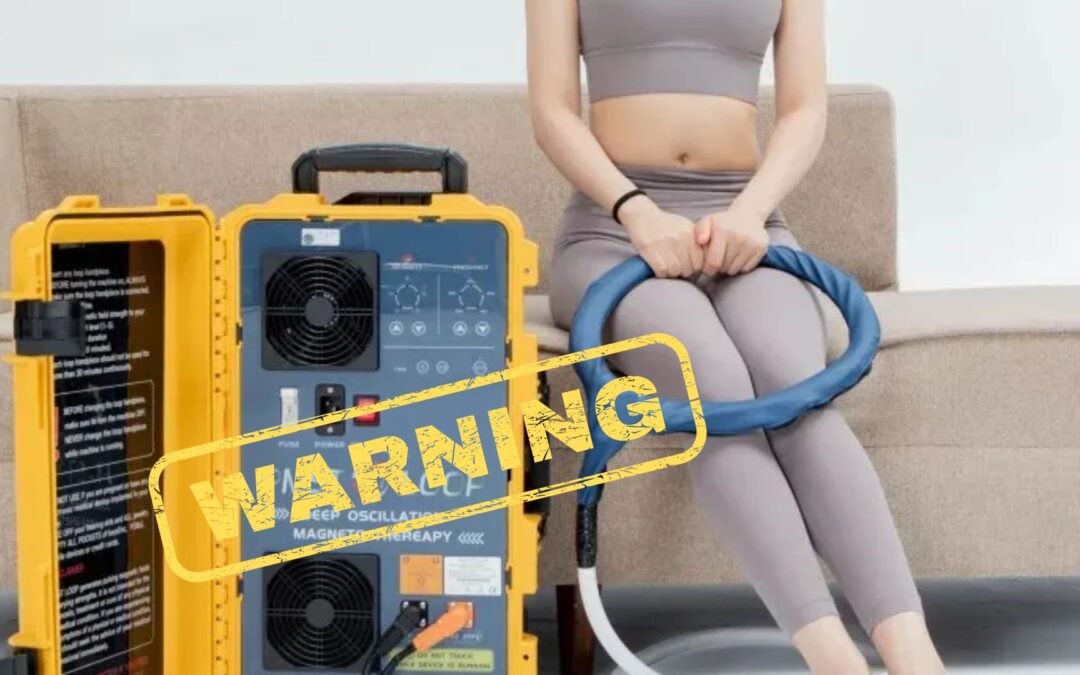Pulsed Electromagnetic Field (PEMF) therapy has been recognized for its healing potential, from reducing inflammation to promoting cellular repair. However, as PEMF therapy gains more attention, there’s a growing interest in high-intensity devices—machines that claim to accelerate healing by delivering stronger pulses. Before you consider building or using one of these devices, it’s important to understand the significant risks involved.
The Hidden Dangers of High-Intensity PEMF Devices
High-intensity PEMF devices operate on much higher voltage levels than their low-intensity counterparts. While it may seem like more power equals more healing, that’s not the case. The components required to build a high-intensity PEMF machine—particularly high-voltage capacitors—are not only complex but extremely dangerous. Capacitors are used to store and release energy quickly, and if they are not wired correctly, they can explode.
The situation is similar to working with tasers: the capacitors in these devices can become lethal if wired backward or improperly connected. In a matter of seconds, the stored energy can turn the device into a virtual grenade, causing an explosion that poses serious harm to anyone nearby.
Additionally, high-intensity PEMF devices require meticulous attention to cooling systems to avoid overheating. Without proper cooling, the device can malfunction or become hazardous to operate. This makes building these devices not only risky but also expensive and time-consuming to maintain.
The Risks of Using High-Intensity PEMF Devices
Even if you manage to build a high-intensity PEMF device without incident, using it comes with its own set of challenges. While these machines can accelerate the calcification of joints, they are not intended for brainwave entrainment or other long-term therapeutic uses. In fact, using high-intensity PEMF for purposes like transcranial stimulation can be extremely dangerous.
Without proper understanding and guidance, the use of high-intensity PEMF devices can result in serious damage to muscles, tissues, or even brain areas. High-intensity PEMF therapy should only be handled by professionals who are well-versed in its safe application. The risks far outweigh any potential benefits for the average user.
High Intensity = High Risk
The allure of faster healing with high-intensity PEMF devices might seem appealing, but the risks are considerable. Building these devices is complex and fraught with dangers, while using them without expert guidance can lead to irreversible harm.
For most people, low-intensity PEMF devices provide a much safer and equally effective way to support natural healing. Low-intensity PEMF has been well-documented for its ability to promote recovery without the high-risk complications of its high-intensity counterparts.
Conclusion: Prioritize Safety in Healing
When it comes to PEMF therapy, safety should always be the priority. High-intensity PEMF devices may promise faster results, but the dangers involved in building and using them make them unsuitable for most users. Opt for low-intensity PEMF devices for a safer, more effective, and natural healing experience.
Understanding the science behind PEMF and its proper use is crucial in ensuring your safety. In this case, more power does not mean better healing—high intensity means high risk. Choose the safer path and focus on the healing potential of low-intensity PEMF therapy.

